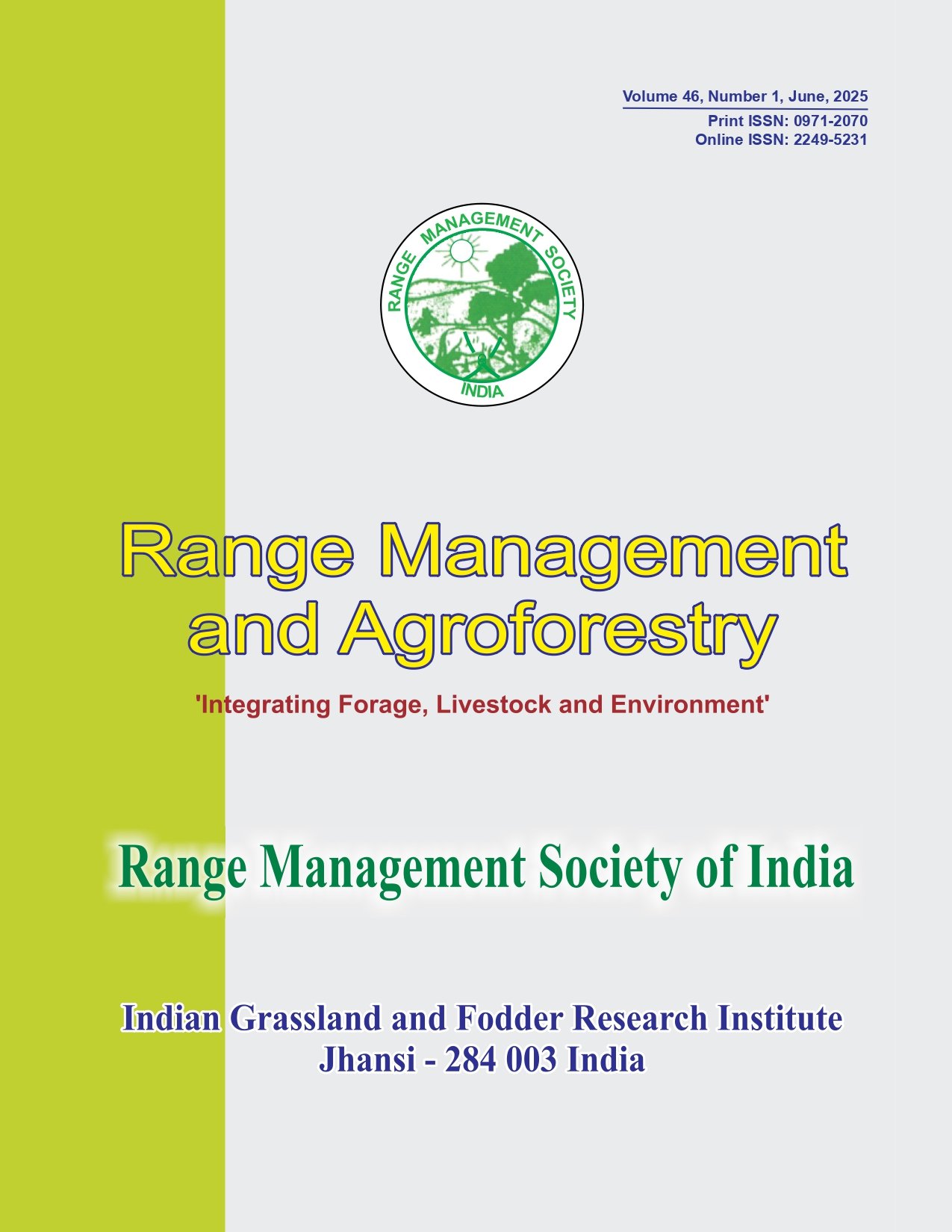Nutritional evaluation of sorghum genotypes with varying resistance to shoot fly, Atherigona soccata (Rondani) infestation
Keywords:
Chemical composition, Defense mechanism, IVDMD, Shoot fly infestation, Sorghum genotypesAbstract
Atherigona soccata (Rondani) is a casual organism of dead heart formation in sorghum and causes serious damage at the seedling stage leading to huge losses in green fodder as well as grain yields. The present study was aimed at assessing the variation in nutritional composition with shoot fly infestation in six sorghum genotypes at 60 days after sowing (DAS), the recommended stage of harvest. Based on the varied responses to shoot fly infestation the genotypes were categorized as resistant (IS18551, ICSV705, ICSV700), moderately resistant (PSC-4) and susceptible (SWARNA and SL-44). The nutritional components such as crude protein (CP), crude fibre (CF), acid detergent fibre (ADF), neutral detergent fibre (NDF), in vitro dry matter digestibility (IVDMD), ether extract (EE), ash, silica, nitrogen free extract (NFE), cellulose, hemicellulose, moisture and hydrogen cyanide (HCN) were studied. The CP, moisture, ash, silica, hemicellulose contents, IVDMD, and HCN were high (P<0.05), but ADF, NDF, ADL, CF, NEE, nitrate-N were found low (P<0.05) in infected genotypes. The resistant genotypes were high in cell wall constituents and low in HCN content compared to susceptible genotypes. Furthermore, insect infestation showed a positive correlation with HCN and negative association with ADF, ADL, crude fibre and silica contents. This study indicated that structural carbohydrates and HCN contributed towards the resistance mechanism in sorghum genotypes against shoot fly infestation.




